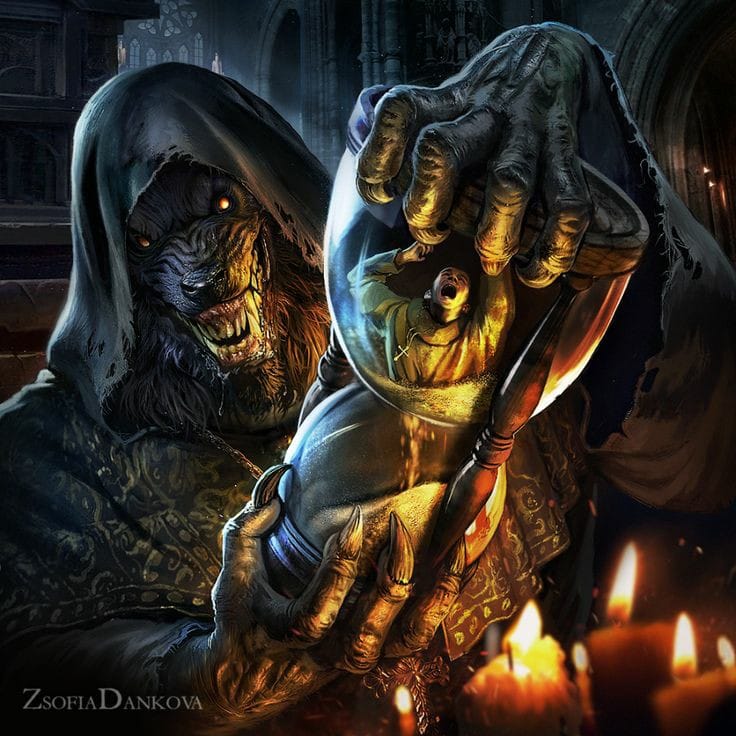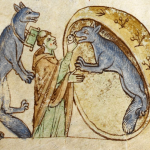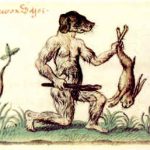
According to German and Polish folklore, any person could transform himself into a werewolf by using a so-called wolf strap or magic belt. Whoever fastened such a strap around himself would turn into a wolf.
A wolf strap was a gift from the devil. A person who possessed such a strap could not get rid of it, however much he wanted to. Anyone who accepted a wolf strap also had entered into brotherhood with the devil, surrendering body and soul to him.
Polish legend said a witch could transform a bride and groom into wolves by laying a girdle of human skin across the threshold at their wedding feast. Later they would receive dresses of fur and would regain their human shape at will.
Among Teutonic peoples, it was thought donning special girdles made of the pelt of a wolf or the skin of a hanged man would effect the change. When tied around the body, a strip of leather made from wolf skin can turn a witch into a wolf.
If someone called out the name of a person who had turned himself into a wolf, that person would regain his human form.
“People (men, women, even boys) change, mostly just for several hours, into wolves by wearing a wolfbelt on the naked body (sometimes also on clothes). [this belt is made of] wolf’s leather or human skin, especially the skin of a hanged man, often adorned with the zodiac, and with seven tongues on the buckle [which must be put] into the ninth hole; if they want to return to their human form, they open the buckle.”
A.Wuttke: “Der Deutsche Volks und Aberglaube der Gegenwart” (1925)
The Werewolf of Alt-Marrin
About sixty years ago in Alt-Marrin there lived a man by the name of Gust K. He too possessed a wolf strap, with which he brought about much damage and misery. Finally the strap was taken from him, and it was to be burned. Three times the baking oven was heated up, and three times the strap was thrown into the glowing fire, but each time it jumped back out of the flames.
Nor would water damage the strap. It always returned.
However, the pastor from Fritzow finally burned it up. When Gust K. died, the pastor at Alt-Marrin could not finish the Lord’s Prayer, and they called on the pastor from Fritzow. The latter said, “Away, away with it!”
When they tried to lower him into the earth, the grave opening was too small, so the pallbearers had to trample him down with their feet. For a long time afterward there was always a hole in his grave mound, but it will have closed up by now, for grass has been growing over the story of Gust K. for a long time now.
F. Asmus and O. Knoop, “Der Werwolf zu Alt-Merrin,” Sagen und Erzählungen aus dem Kreise Kolberg-Körlin (Kolberg: Druck und Verlag der C. F. Post’schen Buchhandlung und Buchdruckerei, 1898), p. 42.








